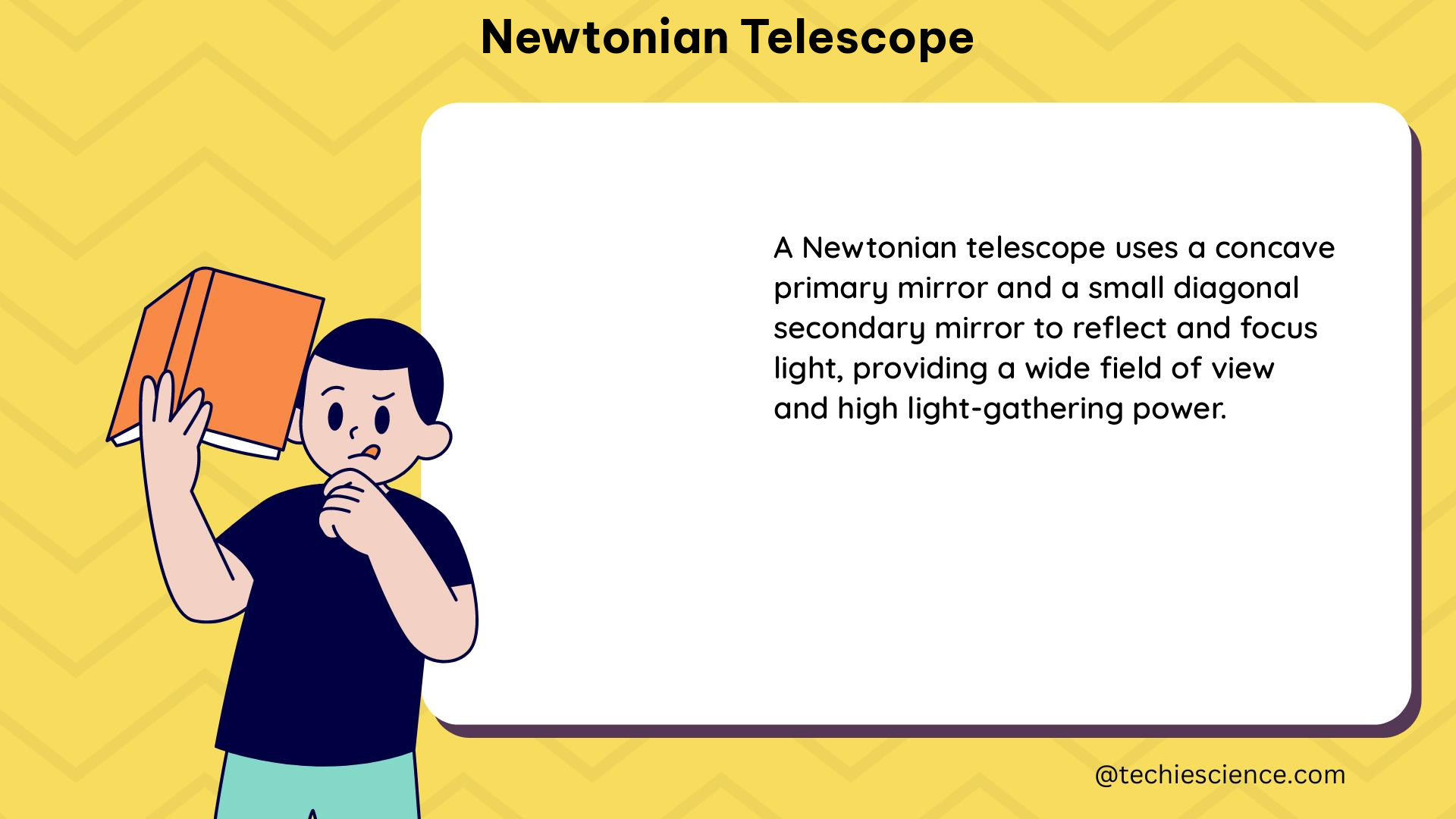Newtonian telescopes are a type of reflecting telescope that use a primary mirror and a smaller secondary mirror to collect and focus light. They are known for their simplicity, affordability, and versatility, making them a popular choice among amateur astronomers. This comprehensive guide will delve into the technical details and specifications of Newtonian telescopes, providing a valuable resource for science students and enthusiasts alike.
Understanding the Aperture and Its Significance
The aperture of a Newtonian telescope is the diameter of the primary mirror, which is a crucial specification that determines the amount of light the telescope can collect. The aperture is directly proportional to the light-gathering power of the telescope, as described by the formula:
Light-gathering power = (Aperture diameter)^2
For example, the AWB 130 Newtonian Telescope has an aperture of 130mm, which is considered a medium-sized telescope. A larger aperture allows for more light to be collected, resulting in a brighter and clearer image, enabling the observation of fainter celestial objects.
Focal Length and Focal Ratio: Balancing Magnification and Field of View

Another important specification of a Newtonian telescope is the focal length, which is the distance between the primary mirror and the point where the light converges. The focal length determines the magnification and field of view of the telescope.
The focal ratio, denoted as f/x, is the ratio of the focal length to the aperture diameter. This ratio is a key factor in the telescope’s performance:
- A telescope with a low focal ratio (e.g., f/4) has a wide field of view and is well-suited for observing large targets such as galaxies and nebulae.
- A telescope with a high focal ratio (e.g., f/10) has a narrower field of view and is better for observing detailed features of planets and the moon.
The relationship between focal length and magnification is given by the formula:
Magnification = Focal length of the eyepiece / Focal length of the telescope
By carefully selecting the focal length and focal ratio, amateur astronomers can optimize their Newtonian telescopes for specific observational goals.
Mirroring Perfection: The Importance of Primary Mirror Quality
The quality of the primary mirror is crucial for the performance of a Newtonian telescope. The mirror should be figured (i.e., ground and polished) to a precise parabolic shape to minimize optical aberrations, such as coma and spherical aberration. The Standard Handbook for Telescope Making provides detailed instructions on how to figure and test a telescope mirror.
The surface quality of the mirror is also essential, as any imperfections or irregularities can degrade the image quality. The mirror’s reflectivity, determined by the coating material, also plays a role in the telescope’s light-gathering efficiency.
DIY Newtonian Telescope Building: A Hands-on Approach
For DIY enthusiasts, building a Newtonian telescope can be a rewarding and educational experience. Mel Bartels’ website, for example, provides detailed instructions on how to design and build a Newtonian telescope, including tips on choosing the right materials and tools.
When building a Newtonian telescope, key considerations include the mirror’s diameter, focal length, and the overall mechanical design to ensure stability and alignment. Proper mirror figuring and testing are also crucial steps in the construction process.
Newtonian Telescopes and Astrophotography: Balancing Focal Length and Field of View
Using a Newtonian telescope for astrophotography requires careful consideration of the trade-offs between focal length, field of view, and tracking accuracy. A longer focal length can provide higher magnification and resolution, but it may also result in a narrower field of view and increased sensitivity to tracking errors.
Conversely, a shorter focal length can provide a wider field of view and greater tolerance for tracking errors, but it may sacrifice resolution and magnification. The quality of the optics and the mount are also crucial for capturing sharp and detailed images.
Astrophotographers may need to experiment with different focal lengths and techniques to achieve their desired results, such as using focal reducers or Barlow lenses to adjust the effective focal length.
Conclusion
Newtonian telescopes are a versatile and popular choice among amateur astronomers, offering a balance of performance, affordability, and customization. By understanding the key specifications, such as aperture, focal length, and mirror quality, science students and enthusiasts can make informed decisions when selecting or building their own Newtonian telescopes.
Whether you’re interested in visual observation, astrophotography, or simply the joy of hands-on telescope building, this comprehensive guide provides the technical details and practical insights to help you explore the wonders of the night sky with a Newtonian telescope.
References:
– Dr. D on the AWB 130 Newtonian Telescope – YouTube. https://www.youtube.com/watch?v=pKM6439t0KM
– Newtonian Reflecting Telescope Designer – Mel Bartels. https://www.bbastrodesigns.com/HET.html
– The Definitive Newtonian Reflector – Articles – Cloudy Nights. https://www.cloudynights.com/articles/cat/articles/the-definitive-newtonian-reflector-r2983
– Choosing a NEWTONIAN reflector 8″ F5 (perhaps F4) FOR photometry – Cloudy Nights. https://www.cloudynights.com/topic/718078-choosing-a-newtonian-reflector-8-f5-perhaps-f4-for-photometry/
– Making and Testing a Telescope Mirror – Geocities.ws. https://www.geocities.ws/kms_goldilocks/techpaper/index.html

Hi, I am Sanchari Chakraborty. I have done Master’s in Electronics.
I always like to explore new inventions in the field of Electronics.
I am an eager learner, currently invested in the field of Applied Optics and Photonics. I am also an active member of SPIE (International society for optics and photonics) and OSI(Optical Society of India). My articles are aimed at bringing quality science research topics to light in a simple yet informative way. Science has been evolving since time immemorial. So, I try my bit to tap into the evolution and present it to the readers.
Let’s connect through